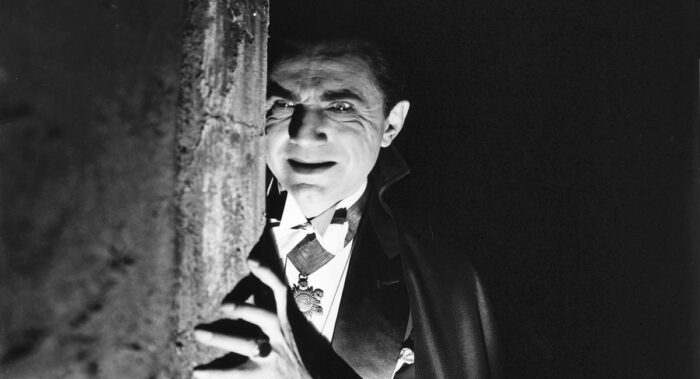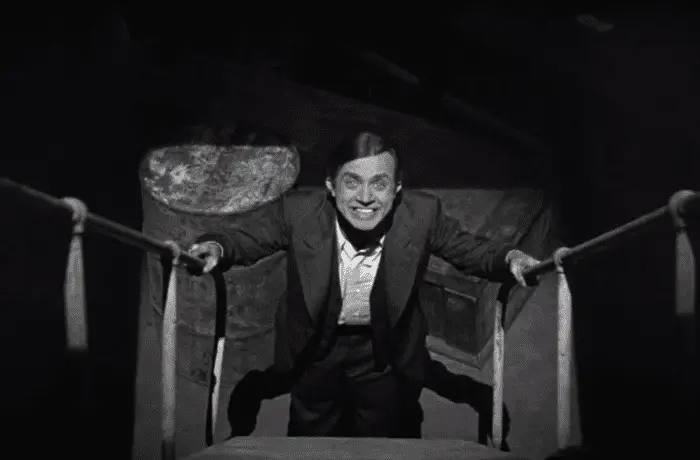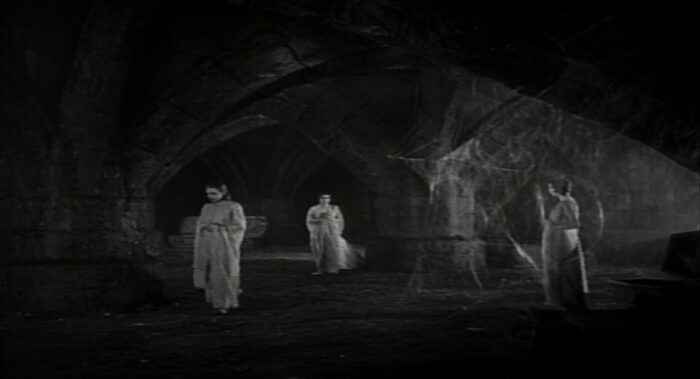Bela Lugosi’s Dracula was, without a shadow of a doubt, the movie that kick-started an entire genre into life. That’s not to say that before it crawled from its coffin and into the consciousness of the people there hadn’t been a fair representation of horror in film, as there had. Cinema had already given us such classics as The Cabinet of Dr Caligari (1920) and The Phantom of the Opera (1925), two productions that still stand up to this day as cornerstones of horror. Hell, Bela Lugosi’s Dracula wasn’t even the first adaptation of Bram Stoker’s novel either, with that honor going to Nosferatu (1922), but what it had that all the other early forays into the world of the dark and macabre lacked was a large studio behind it, willing to do whatever it took to make it a success.
When Universal Pictures needed to buy the rights to the book and the stage play adaptation of it—which is what the movie would eventually be based on—it was Bela Lugosi who was instrumental in making this happen. He negotiated with Stoker’s widow and the play’s author, Hamilton Deane, on behalf of the studio and managed to get the deal sealed for the tidy sum of just $40,000, which was almost three times less than they had originally wanted for it. You would’ve thought that by proving his worth to the company Bela Lugosi’s Dracula would’ve been a straightforward thing to cast and shoot, but Lugosi wasn’t even in consideration for the role, even though he’d had a hugely popular run in the stage adaptation.
The role was supposed to go to Lon Chaney, but Chaney contracted pneumonia, was diagnosed with lung cancer, and then died of a throat hemorrhage in 1930. While one man’s tragic loss should’ve been another man’s gain, the death of Chaney severely affected director Tod Browning—who was already in the midst of full-blown alcoholism—and he would hardly do anything on set outside of tearing pages out of the script and swearing at anyone who went within five feet of him.
This led to the vast majority of Dracula being shot by Karl Freund who may have only been credited as the cinematographer but was the director in all but name. It was Freund’s genius behind the camera that made what could’ve been a car crash of a Dracula adaptation, considering everything that was going on around it, into Bela Lugosi’s Dracula and shot the actor into the stratosphere, while at the same time typecasting him forever as the infamous Count.

Warning: Spoilers Ahead
The movie starts with a coach journey wherein the party is being regaled with tales of the evil that awaits them when they reach their destination, to which those sharing the ride are all very British about it with “Piff and poff, we don’t believe such rubbish.” Even when they are informed by a couple of locals making the return trip home that it’s all true, they still huff and puff and have a stiff upper lip about the entire situation. And nowhere is that lip stiffer than on the face of Renfield (Dwight Frye). In fact, he’s so convinced that it’s all hocus pocus that when they arrive at the small village he informs everyone that he’s going on to Castle Dracula that very night, as he has an appointment with the Count. This causes the villagers to beg him not to go, warning him that the Count and his three brides eat people like him for breakfast. Renfield is having none of this Johnny Foregnier nonsense and with his common sense gland fully removed from his brain, gets back on the coach and heads off to his meeting.
It is here that we have two of my favorite scenes in the film. The first one happens when they arrive at the crossroads in the middle of the night—because, yeah, that’s safe—and the driver just throws Renfield’s bags off of the coach and buggers off quick sharpish. I know it was supposed to portray that the coachman didn’t want to hang around any longer than he had to, but the look on Frye’s face, and the way that the driver isn’t waiting for love or money, is so funny that no matter how many times I’ve watched Bela Lugosi’s Dracula, I can’t help but laugh. The second is after he climbs aboard the waiting transportation—seeing the driver’s face clearly, mind you, and somehow not recognizing that it’s bloody Count Dracula himself when he finally meets the bloke about 20 mins later—and they tear off at about a thousand miles an hour towards the castle. They travel down this long and winding road, towards their destination, and you can see Castle Dracula in the distance with the wilderness surrounding it. It’s an amazing shot because it’s obvious that the coach and the road are real, but the rest of it isn’t and for years I couldn’t figure out how they achieved it. It turns out that they painted everything except the road and the coach onto a pane of glass and put it in front of the camera. It is such an amazing effect that sometimes necessity really is the best mother of all.
When he gets to the castle, Renfield is somewhat surprised to find that the driver is missing and that the front door opens all by itself, but that doesn’t deter him one little bit. Whereas you or I would’ve had it on our toes sharpish and taken our chances with the sodding wolves, Renfield enters and comes face to face with Bela Lugosi’s Dracula. Everything here is perfect. The way the interior of the castle is run down and decrepit, the way there are spider webs so big covering the place that you wouldn’t want to meet the creature that spun them, everything is set up to make you feel ill at ease in the presence of the man/monster that almost glides down the huge gothic staircase to meet the doomed Renfield.
As the two set about finalizing a deal that will see the Count move to England, we get the first of the Dracula tropes. Renfield cuts his finger and Dracula can’t help himself but fancy a snack, right up until the point a crucifix is shown to him by accident, and he is forced to back away. Except at the time, these weren’t tropes or cliches. Nearly everything we now take for granted in Dracula adaptations all started with Bela Lugosi’s Dracula. Plus a few things that never made it any further than the 1931 Universal movie. Such as it’s not garlic that he’s afraid of, it’s wolfsbane. Nor do you ever see any pointy fangs or bite marks on the neck, with the latter just being mentioned later in the film when the women folk are being munched on and the former seeming to stem from the studio’s fear that any lip-to-neck action might be deemed erotic and land them in a whole mess of trouble. There’s zero violence shown either, with the closest we ever get to seeing Dracula go full-on bitey bastard being when he turns Renfield after their business is concluded.
With Renfield now his slave, Bela Lugosi’s Dracula hops aboard a ship and heads to good old Blighty, but not before chowing down on everyone on board, and when they finally do land the British authorities are met with this classic shot of Dwight Frye being madder than a sack full of rabid badgers you’ve just spent 15 minutes poking with a stick;

A lot of people talk about Bela Lugosi’s Dracula being the definitive version of the character, and rightly so, but for me, it’s Dwight Frye’s portrayal of Renfield that steals the show. Yes, he spends so much time chewing the scenery that I’m surprised he still had teeth in his mouth when they’d finished shooting, but it is this Renfield that nearly every other has copied since. Think Tom Waits in Coppola’s version. Think Peter MacNicol in Dracula, Dead and Loving It. Whatever version of this tortured soul—and make no mistake, that’s just what he is—that initially springs to mind, you can bet your bottom dollar that at its core is Dwight Frye’s Renfield in all his bats*it glory.
This saddens me as for years now I have had a theory that a lot of what Frye did in the film ended up on the cutting room floor and thus lost to time. As the movie progresses and Bela Lugosi’s Dracula sets his sights on Mina Seward (Helen Chandler), Renfield starts to fight back against the control the Count has over him. He tries to warn Mina’s father, Dr. Seward (Herbert Bunston), Van Helsing (Edward Van Sloan), and Mina’s fiancee, John Harker (David Manners), that they shouldn’t keep him at the asylum he’s now a resident of, that they need to send him away to save Mina, but none of them seems to care for the ravings of a madman. But there is no context to this.
It’s never explained why Renfield suddenly turns, trying to save a woman who by all accounts he’s never met. This leads me to believe that there was a subplot involving Renfield and Mina, one where he either sees her around the hospital grounds or she is one of the few to show him kindness, that became the victim of Tod Browning ripping pages from the script that he didn’t like or feel like shooting that day and that’s a crying shame. The parts that made it to the finished film were among the best that Frye committed to celluloid and I can only imagine just how much of a tour-de-force the whole package would’ve been if it hadn’t been hacked out.
With London serving as his own personal buffet and Bela Lugosi’s Dracula on the verge of turning Mina into another undead bride, it eventually dawns on Harker that Renfield might not be as fruit loop as he thought, and perhaps Dr. Van Helsing is onto something with this whole vampire malarky, which leads to a showdown where the two chase the Count into his abbey as he carries Mina away to become a creature of the night. They eventually corner Dracula in the cellar. Well, I say corner him, what actually happens is that he runs into the cellar and decides that he has to jump in his coffin for a nap. Look, I get it, vampires have to be in bed before sunrise. It’s the law but considering that the Count has chosen to station his coffin in a windowless bloody room I’m not quite sure why he didn’t wait for them to break in, eat them both, and then pop into bed?
Van Helsing opens both coffins and drives a stake through the Count’s heart. You don’t see this, of course, the camera just pans away and you hear Bela Lugosi’s Dracula scream. But with the deed done, Van Helsing approaches Harker and Mina who is now free of the Count’s spell, and when he is asked if he is ready to go he says something to the effect of not quite yet. Then the film ends.
It turns out that the reason for this sudden and abrupt stop was that originally after Van Helsing had said he’d catch up with them, it cut to Edward Van Sloan who stepped through a curtain and addressed the audience. The speech he gave basically told them that even though what they had seen was a work of fiction, vampires were real and they’d better make sure to keep their windows closed and their beds covered in wolfsbane. Yet this was yet another part of the film that was inexplicably cut over the years, never to be added back in. I mean, I know it was the 1930s but people couldn’t have believed that vampires were real, could they?

Bela Lugosi’s Dracula was ahead of its time. A horror movie about four years before the term horror would be attached to films, it became a surprise hit at the box office as the sixth highest grossing of 1931. It would also inspire Universal Pictures to make as many monster movies as it could over the next decade, starting with Frankenstein the same year. Even though that film is considered superior to Bela Lugosi’s Dracula—and let’s face it, as an actual factual film, it is—it didn’t have the restraints attached to it that Dracula did. It wasn’t adapted verbatim from a stage play. It didn’t have a raging drunk at the wheel who had zero interest in making it a success. And even though parts of it went the same way as Bela Lugosi’s Dracula, towards the cutting room floor, it didn’t feel as if those changes were made to shorten the run time.
Yet for all its faults or maybe because of them, Bela Lugosi’s Dracula is a fantastic movie. Everyone involved acts the s*it out of every single scene and for a movie with no violence or gore, it still manages to be unnerving in all the right places. It’s hard to try a sell someone on a film that is over 90 years old, but if it wasn’t for Bela Lugosi’s Dracula, then horror as we know it today just wouldn’t exist. There would’ve been no Universal Monsters. Nobody would’ve been willing to take a gamble on a genre that wasn’t there. And for that and that alone, Bela Lugosi’s Dracula should be venerated as not just one of the greatest moves ever made, but one of the most important ones to ever grace the silver screen.



